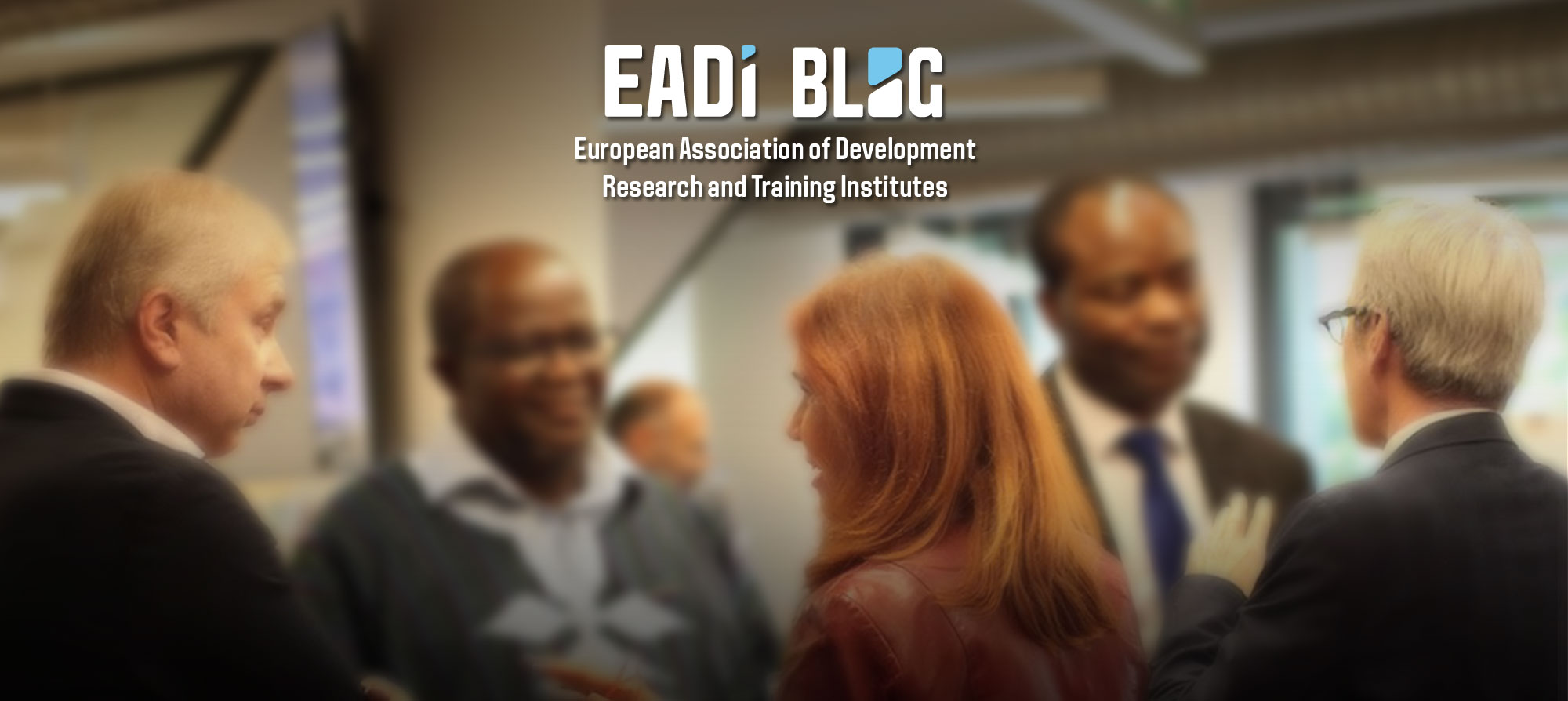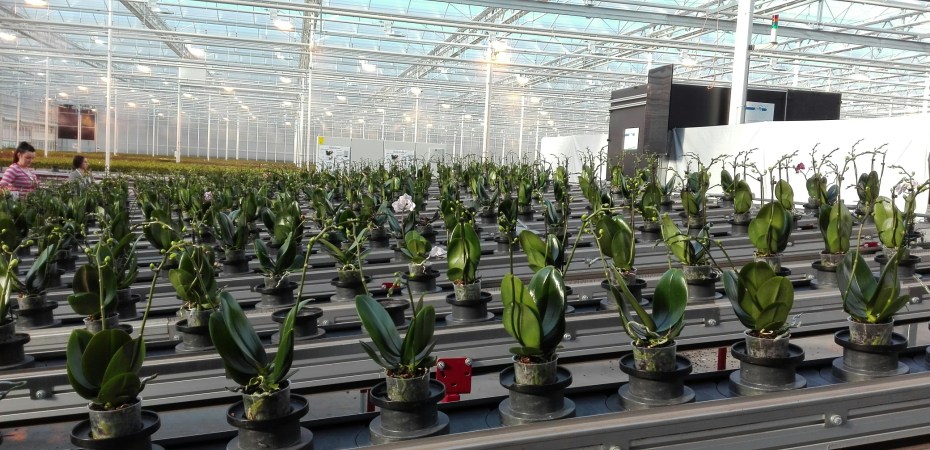by Tyler Williams, Oane Visser, Karin Astrid Siegmann and Petar Ivosevic |EADI/ISS Blog Series
Rapid advances in robotics and artificial intelligence (AI) are enabling production increases in the Dutch agri-food sector, but are also creating harsh working conditions as the sector remains dependent on manual labour, while implementing new technologies. To ensure better working conditions for migrants forming the majority of manual labourers in this sector, ‘worker-friendly’ implementation of new technologies is necessary to limit the negative effects of the automation revolution.
The ‘Threat’ of Automation?
Decades-old debates about the extent of job loss induced by the automation revolution were re-ignited by the seminal work of Frey and Osborne (2013), who suggested large numbers of jobs would be replaced by automation. Where jobs are not lost, automation impacts labour conditions as facilities are geared towards the optimal use of new technology. Novel ICTs offer possibilities to increase labour productivity and to free workers from harsh and repetitive tasks (OECD 2018). Yet they also enable high levels of remote, covert monitoring and measurement of work, often resulting in increased work pressure and the risk of turning workplaces into ‘electronic sweatshops’ (Fernie and Metcalf 1998).
Ever since Keynes (1930) warned about “technological unemployment” in his essay ‘Economic Possibilities for our Grandchildren’, tech innovations have been eliminating jobs across sectors (e.g., in manufacturing), while simultaneously leading to the creation of new types of work (e.g., machine engineers). However, the ‘fourth industrial revolution’ (Schwab 2016) currently taking place might differ from earlier ones: automation is accelerating, affecting a wider variety of jobs, and is now also penetrating sectors like agriculture. Likely candidates for new automation waves are ‘3D jobs’ (dirty, dangerous and demeaning) which are overrepresented in agriculture and often performed by migrant workers (manual mushroom picking, for example, which is physically demanding and carries myriad other risks like respiratory issues). Therefore, this sector – understudied in research on automation – deserves attention.
Farm Robots and Migrant Workers
‘Milking robots’, drones, and (semi-)automated tractors have appeared on farms in the U.S. and the EU. As the second largest exporter of agricultural products and the ‘Silicon Valley of Agriculture’ (Schultz 2017), the Netherlands is at the forefront of such innovations. Yet despite this position, Dutch agriculture still depends strongly on manual labour, as the complexity and variability of nature (crops, animals, soils, and weather) have hampered automation.
Technological innovation and the recourse to low-paid, flexible migrant labour in the Dutch agri-food sector both represent cost-saving responses to the increased market power by supermarkets (Distrifood 2019) and the financialisation of agriculture. A FNV (Federation of Dutch Trade Unions) representative asserted: “Employers see those people as machines […]. Employers need fingers, cheap fingers, if I may call it like that”.
However, an educated migrant workforce provides benefits to employers beyond ‘cheap fingers’. The majority of labour migrants from Central and Eastern Europe (CEE), the largest group of migrant labour workers on Dutch soil (CBS 2019), hold a post-secondary education (Snel et al 2015: 524). As the Dutch are reluctant to do the low-paid 3D jobs, agriculture depends heavily on migrants from CEE countries, especially from Poland (Engbersen et al 2010). An estimated 30 percent of all CEE migrants in the Netherlands work in agri-food, contributing almost 2 billion euros to the country’s GDP in that sector (ABU 2018).
While technology can and does assist in and accelerate the harvesting process, this educated workforce can flexibly perform manifold tasks like identifying and communicating inconsistencies in products or processes to their supervisors, including plant illness, irregular production, etc. This makes them invaluable in improving agricultural production processes and output. However, their working conditions remain precarious. Consequently, grasping the impact that technological innovations have on agriculture necessitates studying transnational labour.
To this end, ISS scholars – with the Centre for Research on Multinational Corporations (SOMO) – initiated a research project titled ‘Technological change in the agro-food sector in the Netherlands: mapping the role and responses of CEE migrant workers’. So far, it has included interviews with organisations in the agri-food sector, trade unions, engineering/labour experts, and migrant workers; this formed the basis for the MA theses of Petar Ivosevic and Tyler Williams. First results were discussed during an ISS workshop with practitioners in December 2018, and a follow-up workshop will be held on 17 March 2020. In addition, two sessions on the topic will be organised at the 2020 EADI Conference taking place from 29 June to 2 July at the ISS.
Industry versus Workers
To date, the benefits of automation for industry and farm workers are highly unevenly distributed. For example, technologies such as (semi-)automated LED lighting allow for more crops to be grown indoors, accelerating crop growth and extending the growing season. This benefits the agricultural industry and supermarkets by leading to all-year production. It also initially improved agricultural labour conditions: workers received a more stable, year-round income and a reduction in time spent working outdoors in difficult weather conditions. However, these improvements also brought negative consequences for labourers. The workweek increased (from 40 to roughly 60 hours – occasionally 80 hours – per week), and smart LED-lighting technologies, sterile environments, and novel ways of conserving heat and humidity created harsher working conditions (cf. Pekkeriet 2019).
Moving Forward
How can decent labour conditions for (migrant) farmworkers be ensured while further automation of agricultural workplaces takes place? First, further research involving (migrant) workers themselves, growers, and other practitioners is needed to inform policy. So far, policy debates on the future of agriculture have paid only scant attention to (migrant) workers and labour conditions. Farm labour ‘shortages’ in agriculture are often narrowly and one-sidedly discussed in terms of supposed ‘unwillingness’ to work in agriculture per se or the tendency of CEE migrants to return to their home countries where economic growth has picked up. Such a position ignores the harsh (and often insecure) working conditions or postulates them as a given. It strongly underestimates the (potential) role of ‘worker-friendly’ implementation of new technologies and decent labour conditions in shaping the quality (and attractiveness) of farm work. Support from Dutch labour unions – which have started to organise and include CEE migrant workers – could increase migrant workers’ voice. Insecure, dependent work arrangements, language problems, and fragmentation of the migrant workforce have thus far impeded migrants’ own collective action. Finally, food certifications in the Netherlands primarily target food safety and sustainability. Including social (labour-related) criteria would reward farms with sound labour conditions.
This article is part of a series launched by EADI (European Association of Development Research and Training Institutes) and the Institute of Social Studies (ISS) in preparation for the 2020 EADI/ISS General Conference “Solidarity, Peace and Social Justice”. It was also published on the ISS Blog.
Tyler Williams recently completed the ISS MA Development Studies’ track in Migration and Diversity and co-organised the abovementioned workshop.
Oane Visser (associate professor, Political Ecology research group, ISS) leads an international research project on the socio-economic effects of and responses to big data and automatization in agriculture.
Karin Astrid Siegmann is a Senior Lecturer in Labour and Gender Economics at the International Institute of Social Studies (ISS), studying how precarious workers challenge marginalization of their labour.
Petar Ivosevic graduated from the ISS MA program in Development Studies in 2018, with a major in Agrarian, Food and Environmental Studies.

